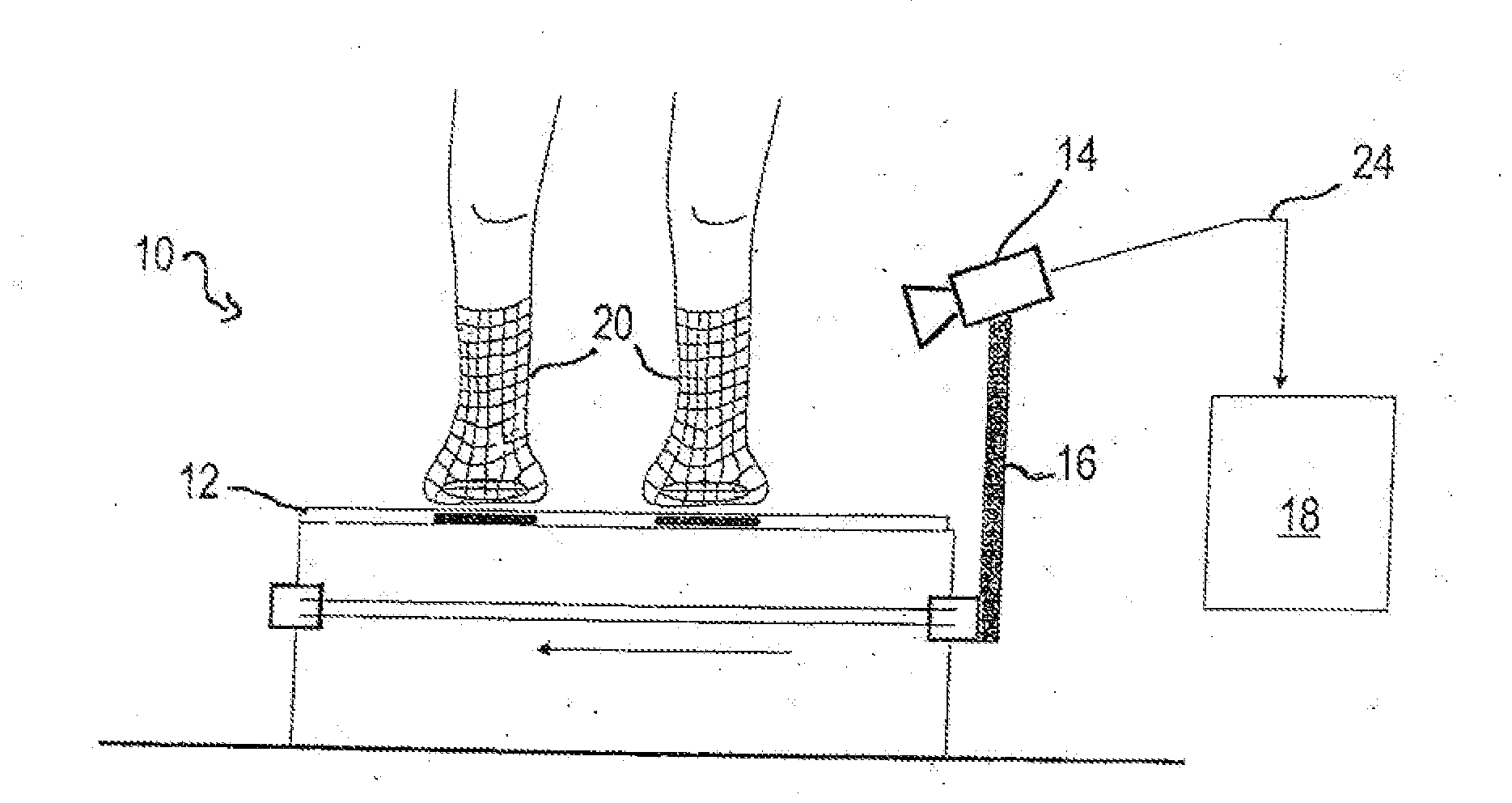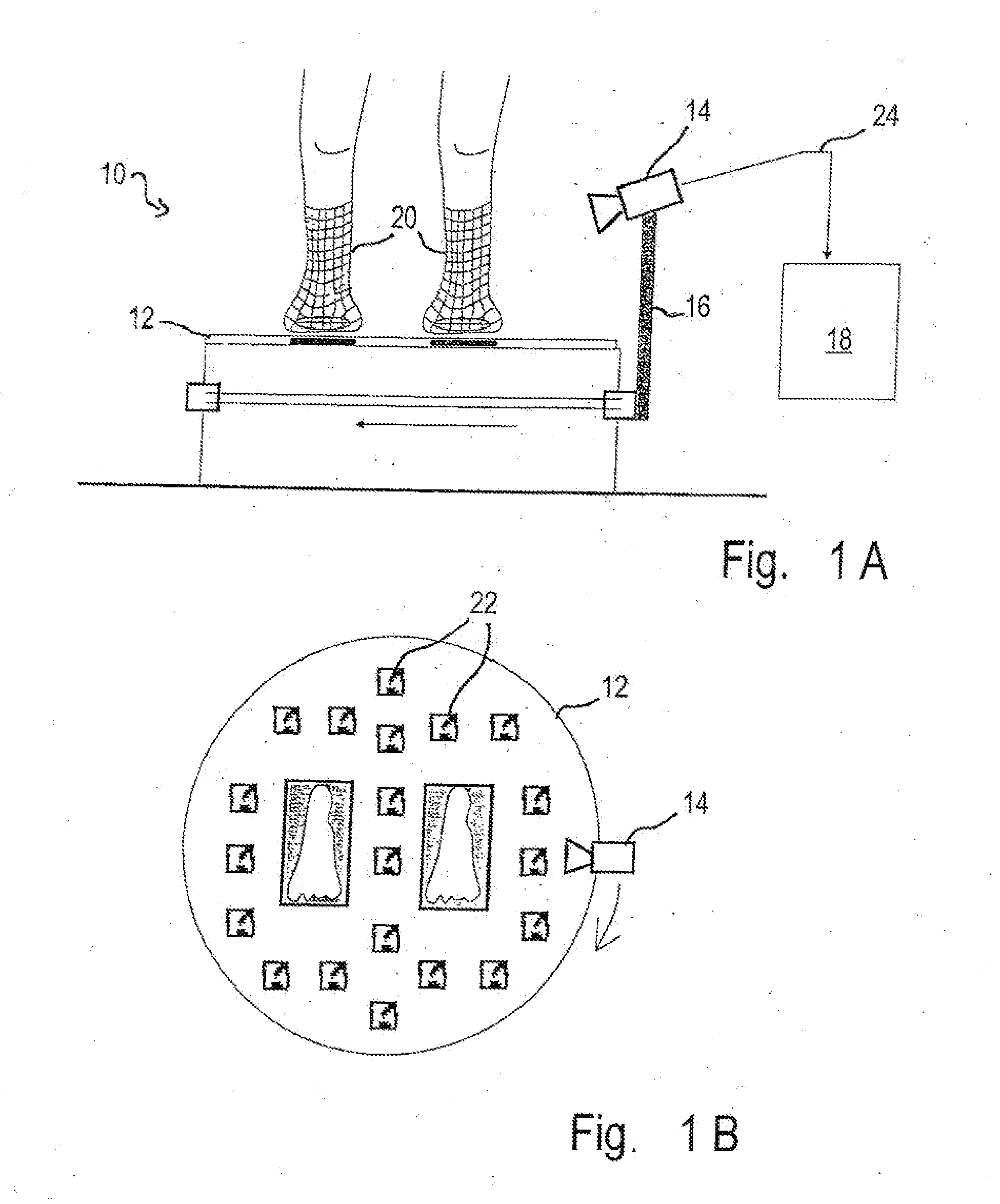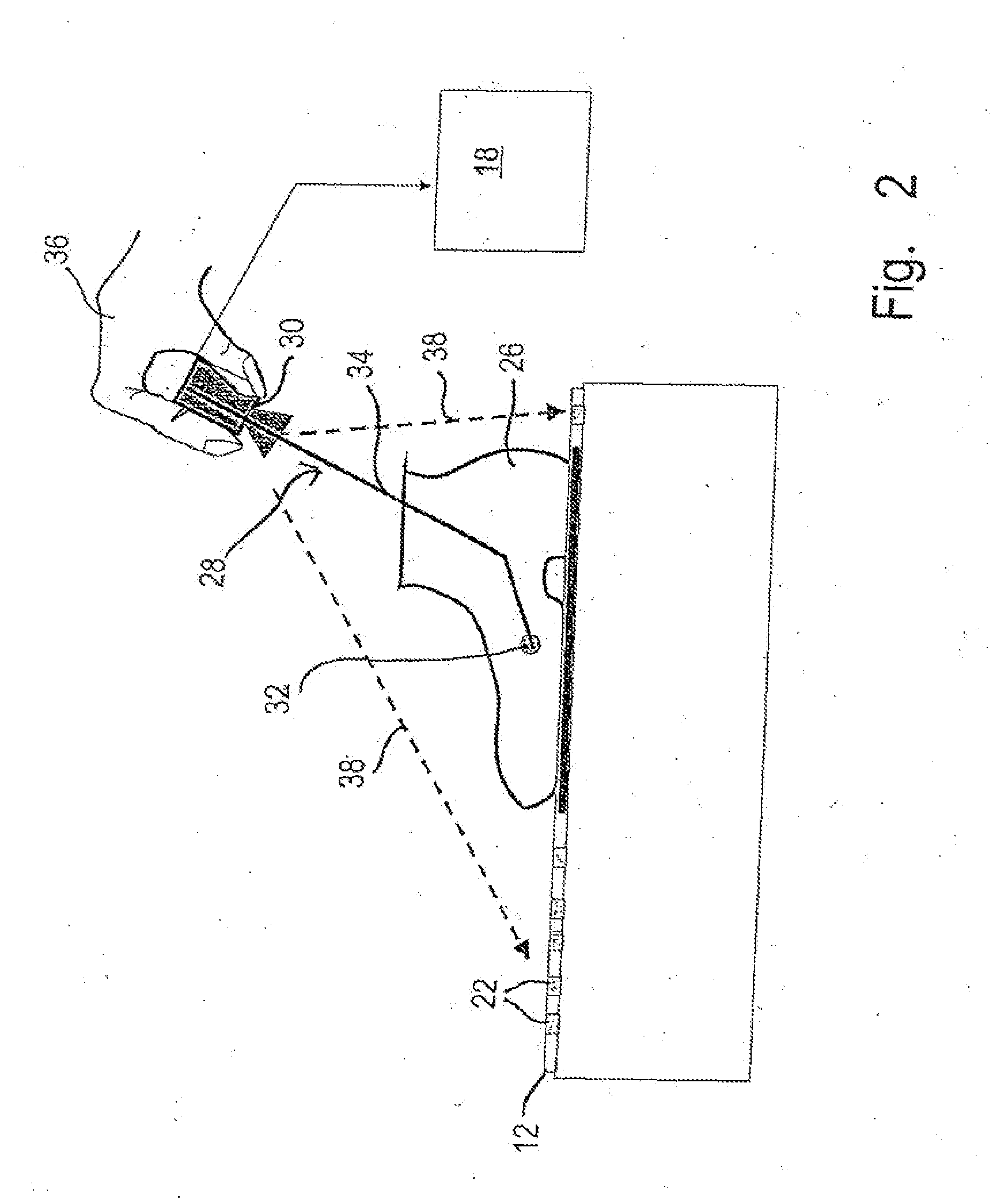Sensing Apparatus and Method for Detecting a Three-Dimensional Physical Shape of a Body
a three-dimensional physical shape and sensing device technology, applied in the direction of instruments, measurement devices, instruments, etc., can solve the problems of not being able to operate by trained specialists or technicians, and not being able to use in shoe stores, and achieve the effect of simple design
- Summary
- Abstract
- Description
- Claims
- Application Information
AI Technical Summary
Benefits of technology
Problems solved by technology
Method used
Image
Examples
first embodiment
[0031]In a first embodiment, the sensing end 32 mainly contacts the inner wall of the footwear 26 to scan it mechanically; here, the sensing end 32 may be fitted with a mechanical and / or optical and / or inductive and / or acoustical contact mechanism which upon contact with the inner wall generates a contact signal. Either an image is not recorded until triggered by the contact signal, or, preferably, the camera 30 records images continuously in a video mode and, based on the contact signal, those images are selected which were recorded at the moments the contact signals were supplied.
[0032]In a second embodiment, the sensing end 32 disposes of a mechanically linearly resiliently displaceable sensing tip having a linear displacement sensor. Upon contact of the sensing tip with the inner wall of the shoe 26, a displacement signal is transferred from the linear displacement sensor to the computing unit 18. A correction vector is calculated from the displacement signal and is added in the...
third embodiment
[0033]In a third embodiment, the sensing end 32 disposes of an opto-electronic and / or acoustic distance measuring device for measuring a distance of the sensing end 32 from the spatial shape in at least one defined direction. The measured distance is transferred to the computing unit 18 and a correction vector is calculated from the measured distance. This correction vector is added to the space coordinates of the sensing end 32 photogrammetrically established from the images recorded by the camera 30. In this way, the coordinates of the inner wall are established without the sensing end 32 mechanically contacting the inner wall.
[0034]In all of the embodiments, the camera 30 preferably permanently records images of the photogrammetrically marked base plate 12 during the scanning of the inner wall and transfers these images to the computing unit 18, which uses these image sequences to calculate, applying the methods of photogrammetry known to those skilled in the art, the respective ...
PUM
 Login to View More
Login to View More Abstract
Description
Claims
Application Information
 Login to View More
Login to View More - R&D
- Intellectual Property
- Life Sciences
- Materials
- Tech Scout
- Unparalleled Data Quality
- Higher Quality Content
- 60% Fewer Hallucinations
Browse by: Latest US Patents, China's latest patents, Technical Efficacy Thesaurus, Application Domain, Technology Topic, Popular Technical Reports.
© 2025 PatSnap. All rights reserved.Legal|Privacy policy|Modern Slavery Act Transparency Statement|Sitemap|About US| Contact US: help@patsnap.com



